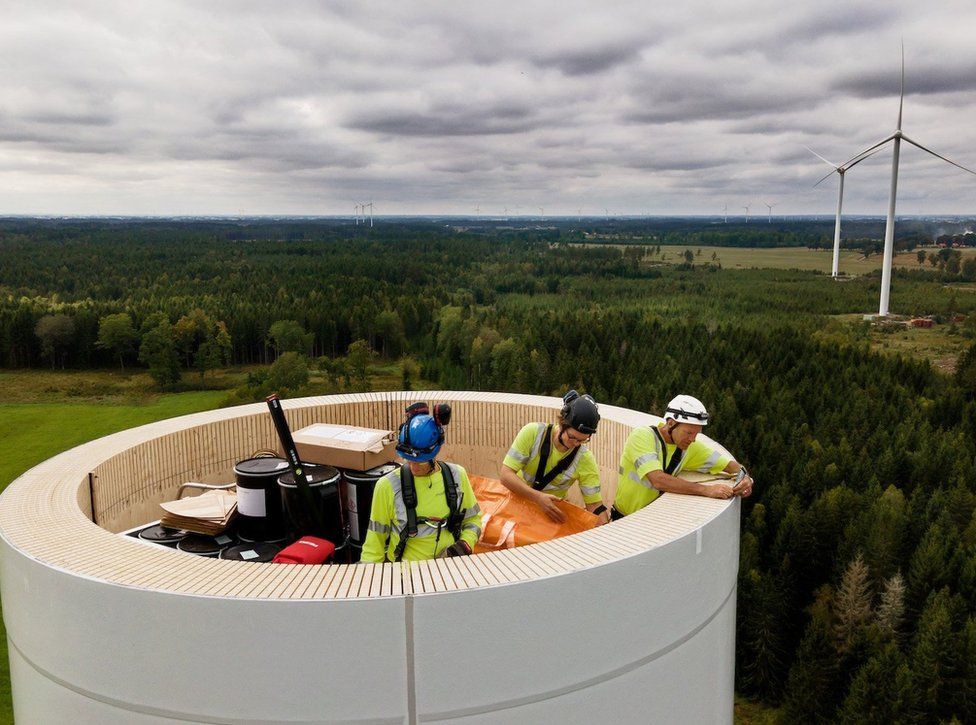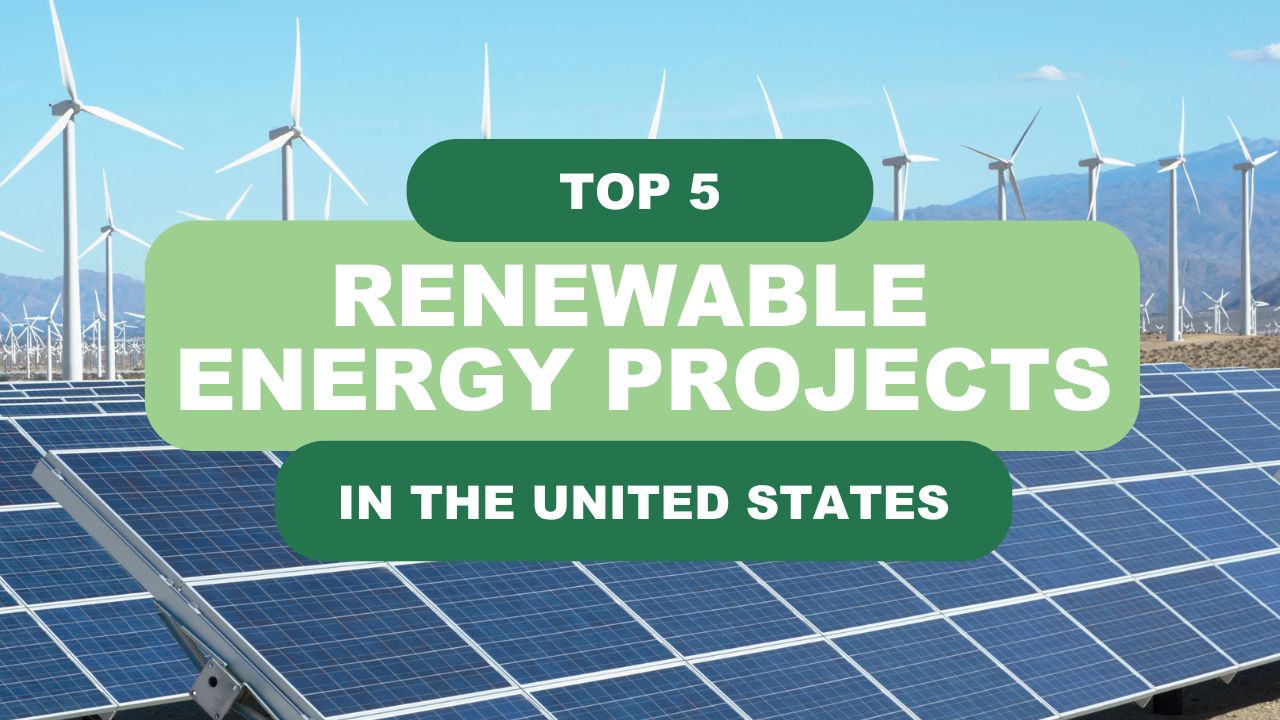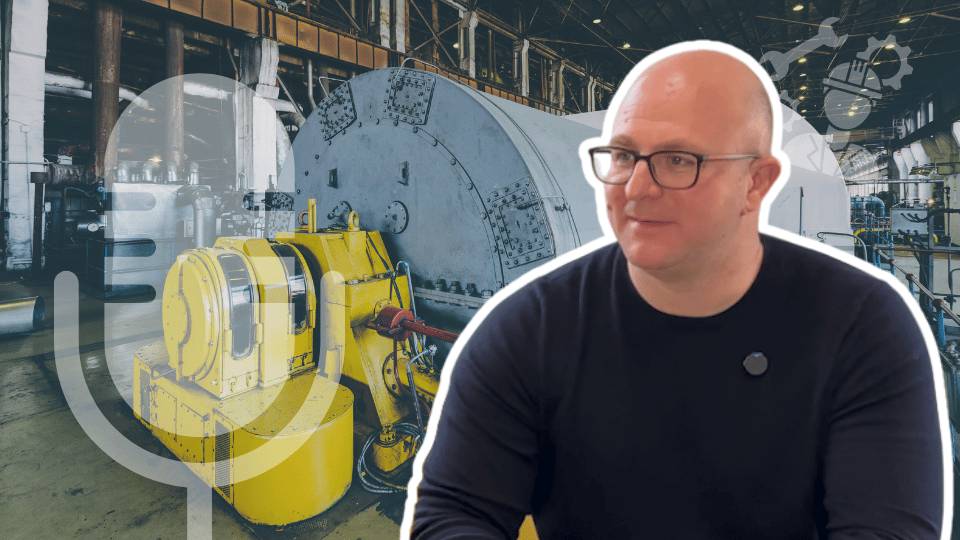
Exploring the world’s tallest wooden wind turbine project
14 Mar, 20247 minReaching heights of 105m, with a 2MW generator at the helm and the capacity to supply e...

Reaching heights of 105m, with a 2MW generator at the helm and the capacity to supply enough electricity to power around 400 households, the latest wind turbine produced by Swedish wood technology company Modvion boasts one significantly unique feature - it's primarily constructed out of wood. The first of its kind, the innovative project known as the Wind of Change is at the forefront of wind development, holding the title of the world's tallest wooden wind turbine project.
This guide will delve into this pioneering wind turbine project, highlighting the innovators behind the technology, how the turbine was constructed and the benefits it brings to wind energy and the broader renewable energy space.
In this guide, we’ll explore the following:
- Modvion: the innovators behind the wooden wind turbine
- How Modvion’s wooden wind turbine was made
- 5 benefits of Modvion’s wooden wind turbine project
Modvion: the innovators behind the wooden wind turbine
Swedish wood technology company Modvion has emerged as a leading innovator in the wind energy space, redefining the future of how wind turbines are designed through pioneering technology with the use of laminated wood.
Modvidon is at the forefront of a movement that strives to make wind power almost entirely free from carbon emissions by strategically replacing emission-heavy materials with sustainably sourced wood. Considered nature's carbon fibre, the use of wood has become the trademark material of Modvion's wooden wind turbine projects, a sustainably sourced and carbon-negative alternative to traditional materials used for wind turbine projects, such as steel and concrete.
The magnitude of Modvion's innovative technology has garnered support and investment from prominent investors in the renewable energy industry, including the Swedish Energy Agency, the Vastra Gotaland region, and the EU programme Horizon 2020 EIC Accelerator. They’ve also gained financial and manufactural backing from Vestad, the world's leading wind power installers.
Leaning on their focus on engineered wood, Modvion sees wood as a material with the potential to outperform concrete and steel for future wind development. They believe wooden wind turbines will play a crucial role in the next generation of wind power, presenting an eco-friendly solution to the increasing global demand for taller and more sustainable wind turbine towers.
Modvion's vision for future wind development has been proven by the construction of the world's tallest wooden wind turbine tower just outside Skara, Sweden. This milestone and first of its kind marks a significant achievement for Modvion and a giant leap forward in the possibilities of sustainable energy infrastructure.
How Modvion’s wooden wind turbine was made
Aesthetically, Modvion's Wind of Change wooden wind turbine project resembles the look of traditional steel turbines we're used to seeing in the renewable energy industry. Like its steel counterparts, Modvion's design has a robust exterior, clad in thick white paint to shield against elements like fire and water. Whilst the turbine is primarily made of wood, its blades are crafted from fibreglass and are attached to a generator to fulfil its role of converting wind energy into electricity.
The uniqueness of the wooden wind turbine project is noticeable from the inside of the tower. Internally, the structural integrity of the 105m (345ft) wind tower reveals an intricate and carefully crafted composition of 144 layers of 3mm-thick laminated veneer lumber (LVL), which are glued together to form its thick walls. This wood is sustainably farmed from Scandinavian spruce trees, an abundant species used for Christmas trees.
Modvions' manufacturing process occurred at their factory on the outskirts of Gothenburg, Sweden, where the thin layers of wood underwent an intricate process of glueing and compression to create the curved sections of the wind turbine. These sections were then transported to the construction site, where they were assembled into cylinders and stacked atop one another to form the towering structure.
The wooden cylinders were securely stacked and held together by steel fittings. Notably, the use of steel in this context is purely strategic and provides essential support to the wooden structure.
Theoretically, steel turbine towers could replicate this modular technique of stacking smaller cylinders on top of one another by cutting them into smaller pieces. However, this would demand additional effort to cut and bolt the sections together, which would increase both costs and maintenance requirements. Fortunately, through Modvion's wood-based wind development, these drawbacks are not part of the conversation.
Modvion's commitment to wooden wind turbine projects marks a step towards transitioning from traditional materials and represents a harmonious blend of nature's resources and innovative engineering. The meticulous process of creating this onshore wind turbine is a testament to Modvion's dedication to sustainable, eco-friendly energy solutions, amongst other benefits.
5 benefits of Modvion’s wooden wind turbine project
As a European-based company with plans for global expansion, Modvion's innovative wooden wind turbine project boasts many significant benefits. From being carbon-negative, sustainable, and scalable to being a cost-efficient solution that simplifies transportation within the wind development space, here are 5 benefits of Modvion's wooden wind turbine project.
1. Wooden wind turbines are carbon-negative
Traditionally, offshore, and onshore wind turbines are constructed from steel. Although these turbines greatly support the transition towards renewables, the steel manufacturing process is not entirely free from carbon emissions. However, by transitioning to wooden wind turbine towers, Modvion has dramatically mitigated carbon emissions during manufacturing and established a carbon-negative method of wind development.
Their wooden wind turbine, constructed from laminated wood, stores more CO2 than is emitted during its production, resulting in a net reduction of the overall carbon footprint. These towers significantly decrease the carbon footprint for the entire turbine, surpassing a reduction of 25%. Considering that conventional steel and concrete turbine towers contribute to 15% of global CO2 emissions in wind power, this shift away from steel has the potential to impact global emissions substantially.
For further context, a 110m tall wind turbine tower made of steel produces around 1,250 tonnes of carbon dioxide. Alternatively, a wooden wind turbine of the same height emits about 90% fewer emissions - 125 tonnes of carbon dioxide.
Modvion's wooden wind turbine project is also designed to act as a carbon sink, storing CO2 within the wood to mitigate its impact on the planet. The volume of wood required for a Modvion onshore wind turbine, ranging from 300 to 1,200 cubic meters depending on height and load, translates into a considerable carbon storage capacity of around 240 to 950 tonnes of CO2 per turbine tower, contributing to a net-negative climate impact.
2. Wood is sustainably sourced - in the case of Modvion
Modvion's commitment to sustainability extends beyond the performance of their carbon-negative wooden wind turbine towers to the very source of their materials. Scandinavian spruce is the primary wood species used in Modvion's onshore wind turbines, which is abundantly available and subject to sustainable forestry management.
Approximately 200 trees contribute to the construction of a Modvion turbine tower, all of which come from the same spruce species used for Christmas trees. Modvion emphasises that these trees are farmed sustainably, embodying a practice where, upon harvest, an equivalent or greater number of trees are replanted, ensuring a continuous and replenishing cycle.
The wood stems from sustainably managed forests, certified under reforestation schemes such as the Forest Stewardship Council (FSC) and the Programme for the Endorsement of Forest Certification Schemes (PEFC). These certifications ensure that the logging activities are in unison with the principles of responsible forestry, with a commitment to providing a balance between harvesting and regrowth.
After decommissioning, the wood can be repurposed for various applications, including high-strength beams in conventional buildings. As the wooden wind turbine captures carbon during its lifespan, it will continue to contribute to efficient CO2 capture even after its technical life as a turbine is completed, ensuring the prolonged storage of captured carbon.
3. Wooden wind turbines are scalable
Undeniably, the innate strength of steel has made it a staple for the structural integrity of offshore and onshore wind turbines. However, with the future need to extend the height of wind turbines to capture stronger winds and achieve greater energy capacities, steel is partially constrained by the need for additional strength to carry its weight in taller structures.
On the other hand, wooden wind turbines are essentially hollow on the inside and are proven to be as strong as traditional technologies; they present significant space for scalability. Essentially, wooden turbines are 30% lighter than steel and match the strength of the traditionally used material.
In addition to being lighter and as strong as steel, wooden wind turbine projects have a potentially longer lifespan. While traditional wind turbines can last between 20 and 25 years, Modvion's wooden wind development can be operational for up to 30 years.
Modvion takes full advantage of this opportunity by utilising LVL as the primary material for their wooden wind turbine towers. Compared to steel alternatives, LVL offers higher strength per weight and a superior strength-to-cost ratio. This makes it an excellent alternative to traditional wind turbines, positioning it as a forward-thinking option that seamlessly adapts as turbines evolve towards taller structures to generate larger capacities.
The key to understanding the advantages of wood in this context lies in its ability to increase its volume without compromising the tower's structural integrity. By increasing the thickness of the walls, the LVL material can achieve a balance between strength, weight, and cost that surpasses steel alternatives. This characteristic has the potential to make wooden towers a fitting choice for current wind turbine designs, making them a potential future-proof solution.
4. Wooden wind turbines cost no more than traditional turbines
Another benefit of Modvion's wooden wind turbine towers is that they cost no more than traditional steel towers and they have the potential to be even more economical over time.
The cost advantage of future Modvion wind turbine projects is contingent on the tower's height, with taller structures offering a more significant advantage than their steel counterparts. This strategic methodology aligns with the wind energy industry's desire to construct taller turbine towers for increased yields of wind power.
As mentioned, Modvion's solution lies in using engineered wood, a lighter material that matches the strength of steel. This crucial attribute means that achieving additional height no longer necessitates costly reinforcements or maintenance. The innovation here is twofold: not only does building taller turbines become more efficient in terms of energy production, but it's also cost-effective.
The modular design of the wooden turbines plays a pivotal role in this cost equation. As the wooden turbine is assembled in sections, these modules simplify transportation and contribute to the project's overall cost efficiency - more on how it simplifies transportation later. The lightweight yet sturdy nature of the engineered wood used in this wind turbine project ensures that the cost advantage becomes increasingly significant as the towers reach greater heights in the future.
Modvion's wooden wind development solution debunks the myth that sustainability and innovation come at a premium. By offering a competitive and economically viable alternative to traditional steel towers, Modvion addresses the industry's demand for taller structures and presents a pathway toward a more sustainable and cost-effective future for wind power.
5. Transportation is simplified with wooden wind turbine modules
Typically, steel turbines are transported via roads, which brings obstacles, as these steel turbines are at great heights. Traditionally, as wind towers continue to surpass the 100-metre mark, these transportation hurdles become more apparent. This is especially true when the base diameters exceed transport width limits set in many regions.
However, the modular design is the key to transporting wooden wind turbines. Here, the wooden towers can be delivered in smaller sections before being assembled on top of one another on-site. This modular approach streamlines the transportation process, eliminating the need for extensive permit procedures and making it more feasible to transport the towers on standard roads.
Additionally, the laminated wood making up the core structure of these modules boasts a greater strength-to-weight ratio compared to traditional steel used in wind turbine towers. As mentioned, Modvion's towers cut the total weight of conventional turbines by around 30%.
This unique property of the materials used in wooden wind turbines not only brings the potential for future-proofed, robust, and scalable construction but significantly reduces the weight lorries must carry, which is a critical factor in transportation logistics.
Final thoughts on the future of wooden wind turbine projects
Looking ahead, the BBC reported that Modvion has ambitions to construct another wooden wind turbine, with aims of surpassing the 105-metre mark set by the original. By 2027, they also aim to be at a stage where they can produce 100 modular turbines annually.
Additionally, as the wind energy industry develops around 20,000 turbines annually, Modvion plans to contribute 10% of those traditionally constructed wind turbines with their innovative wooden wind development technology. Additionally, while their originally installed tower is part of the onshore wind turbine family, they aim to adapt their technology to support offshore wind projects.
For now, what can be said about Modvion’s Wind of Change wooden wind turbine project is that it has the potential to support the world’s ongoing push towards renewables. Its carbon-negative, sustainable, scalable, cost-effective, and simplified transportation benefits make it a revolutionary technology for the wind energy industry.
Of course, traditional wind turbines today cannot be ignored for their efficiency and as significant contributors to the energy transition. So, while unlikely to replace conventional wind turbines, it can act as a suitable and beneficial counterpart to the future of wind development.
Interested in learning more about the technological developments of the renewable energy industry? Read our piece on How Perovskite Solar Cells Are Shaping the Future of Solar Energy.
Looking to grow in the renewable energy industry?
As a global leader with over two decades of expertise within the renewable energy industry, we see how the innovation of Modvion’s wooden wind turbine project brings with it the potential for future growth for clients and candidates operating within the wind energy and renewables space.
If you're looking to grow your organisation, our talent acquisition services can connect you with the best permanent and contract talent on the market to support your short and long-term goals. Alternatively, if you're a candidate seeking to register for the latest wind jobs to progress your career in renewable energy, we can support you.
Contact us today for further information on how we can meet your renewable energy recruitment needs.
Image credit: https://modvion.com/press








